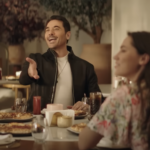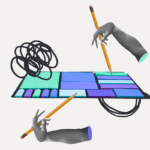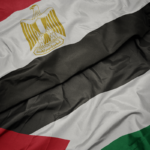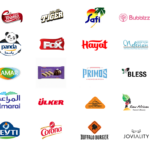Pop ups and social media have several important things in common.
People love them, they are sharable experiences that have a deadline, it is completely different from what you would get from their traditional form (stores and traditional media), and marketers shouldn’t ignore them.
Pop up stores, boutiques and restaurants continue to be some of the more successful marketing stunt strategies, and there is a reason for that. People love new things! A popup is supposed to give customers a new sense of excitement and branded (or not) experience.
The problem is that many local marketers are bringing consistency to their popup game. Exempting the resent MENA-wide Nap on the go by IKEA, popups are rarely hyped by customers as exciting experiences.
- Advertisement -
Why? Simply because there is nothing really new to them
So, how do you make your popup a master of attention grabbing? Try these tips.
Get Visual
When working on popups, your new best friend is Instagram, and what does Instagram love? Bright and colorful places to interact with and take photos of.
Photo opportunities are now almost essential to becoming well-shared online, as a popup or a regular location. While photo opportunities used to mean celebrities, and they are still popular for events, in today’s world of social they mean fun and aesthetic places and objects.
Small fun activities, beautifully crafted scenery, and etc. can all help elevate your popup and provide more chances for social sharing. Karvan Cévitam had the right idea with their bright Lemonade bar, which included the above confetti shower, a pink ball pit and Insta-worthy decorations.
In a study by Curalate, bright photos on Instagram earned 24% more likes than darker photos, while a single dominant color generated 17% more likes than those with multiple. So, a good color theme with a main color and some bright natural lighting may be all you need for your next popup.
Be Experimental
A popup journey is a brand’s chance to really get creative and show off their imagination and fun side. Many brands and marketers continue to see popups as an extension of the shopping experience. While the popup can be an extension, it is better used to break the mold and get creative without lingering side effects if it doesn’t turn out well.
But when it is done well, it packs a strong punch of buzz, excitement and new brand loyalty.
Many brands have jumped out to reinvent the experiences people have with their products, like Bark & Co and Pantone.
Bark & Co, a dog-focused ecommerce company, decided to focus on their real customers, the dogs, with a fun doggie playroom. BarkShopLive’s aim was for dogs to choose their own favorite toys. The dogs were fitted with FID-enabled vests, which tracked the toys they played with the most.
Pantone, the world’s most well-known color company, had experimented with ways to make colors more exciting and sharable before but one stood above the rest.
Pantone actually ran a popup café in Monaco and Paris in the summers of 2015 and 2016. The popup café was an experimental leap for the brand, and a successful one. The color company designed drinks and food with their signature color codes, along with the popup and packaging itself being color coded.
There's a pop-up cafe in Monaco where food is inspired by various @pantone hues. Bring this to the USA! #PantoneCafe pic.twitter.com/aijghUO9ht
— Kiwi Creative (@KiwiCreativeInc) July 7, 2016
Monaco's #PantoneCafe serves a simple but bold color-coded menu https://t.co/wyWWu7wWNK pic.twitter.com/L0Zn37VLGU
— COOL HUNTING® (@coolhunting) June 22, 2016
The café generated quite a bit of buzz, and allowed customers to experience the company and colors in wholly new way. It was extremely visual and showed that experimenting with novel ways for customers to experience a brand isn’t a bad thing.
Today, there is a Pantone Hotel available for booking.
Engage and Immerse
Popups are usually seen as a new location to sell a brand’s items, but often they are not used to engage their customer base. Popups are a great way to interact with customers, as well as test new items.
There are many ways to engage customers, not just through giveaways and talks. A fun and immersive customer experience that links back to your product or brand is a much stronger method of keeping your brand relevant and top of mind.
Take Google for example. When Google wanted to teach people about Google Assistant on Google Home Max and Google Home Mini, they decided to have fun and create an innovative experience. The internet brand created a Minigolf popup, where people could play minigolf in courses that represented areas where Google Assistant would be useful.
Google took what could have been a simple popup booth that had representatives explaining the product and made it into an entertaining experience that still allowed customers to learn about the product and its uses.
Who doesn’t love to Instagram a fun day out?
Have Fun
Popups are a breath of fresh air for many customers who get excited with new and surprising activities and experiences. When they walk towards or into a popup, they are expecting to find the unexpected and enjoy their time. They are looking for something more and completely different from the usual brand experience.
Many of the examples we have provided do just that, and customers have loved their time with the brand, fostering long-lasting loyalty and memorability.
Think of Japanese organic food chain Dohtonbori, who created a “Fast Food Aid” pharmacy. Customers could exchange their fast food receipts for a customized bottle of supplements to make up for nutrients missed. The goal was to educate customers and indirectly promote the health-focused restaurant chain.
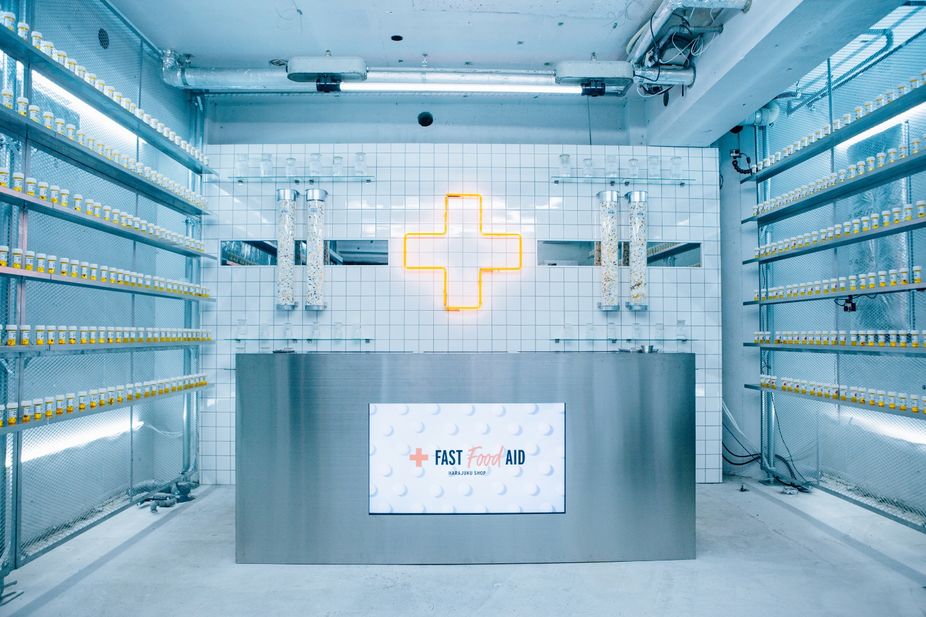
Or of Solve, a Minneapolis-based creative agency, who created a popup in various college campuses to test and interview potential interns on the spot. The popups tripled their usual internship applications.
So, just have fun with your next popup and think about how to experience your brand in an interesting and Instagram worthy setting.


